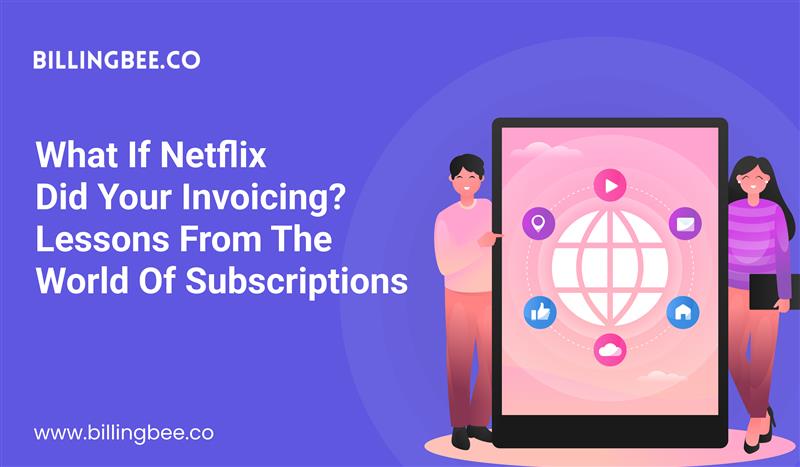What If Netflix Did Your Invoicing? Lessons from the World of Subscriptions




Imagine if your invoicing system ran as smoothly as your Netflix subscription. No last-minute payment reminders, no awkward client follow-ups, no forgotten due dates. Just a steady, automated rhythm—month after month.
This isn’t just a fantasy. It’s the reality of recurring invoicing, and it's transforming how modern businesses, freelancers, and agencies get paid.
Let’s break down what we can learn from subscription giants like Netflix and Spotify—and why their billing model might just be the secret to scaling your income, simplifying your processes, and building deeper client trust.
The Subscription Secret: Why It Works
At its core, a subscription model is built on trust and consistency. You sign up once, enter your payment info, and the service just... keeps going. No disruption. No hassle.
Now ask yourself this:
- What if your clients knew exactly what to expect from you each month?
- What if they didn’t have to wait for a new invoice every time?
- What if your revenue was predictable, just like a streaming service?
The beauty of recurring invoicing is that it turns chaotic, unpredictable payments into a smooth, sustainable flow—both for you and your client.
Recurring Invoicing: Not Just for SaaS Companies
Many think recurring billing is only for tech companies or SaaS platforms. Not true.
Let’s look at a few real-world examples:
- Freelance designers offer monthly retainer packages for updates, revisions, and design tweaks.
- Marketing agencies charging fixed monthly fees for social media management, SEO, or content creation.
- Tutors, coaches, consultants billing weekly or monthly for regular sessions.
- Maintenance or IT support providers offering flat-rate monthly services for ongoing needs.
Recurring invoices work anywhere value is delivered consistently over time.
The Benefits Go Beyond Money
Sure, recurring billing helps with cash flow. But there’s more under the hood:
1. Time Saved = Hours Earned
Once you set up a recurring invoice, it runs itself. No need to retype the same line items. No repetitive emails. That time can be reinvested into your actual work—or your weekend.
2. Reduces Payment Delays
Clients are more likely to pay on time when they expect a regular charge. It builds a billing routine, which reduces “surprise” invoices and improves predictability.
3. Professionalism
Automated recurring invoices make you look sharp and organized. It tells your clients: “I run a business, not a hobby.”
4. Client Retention
Recurring models build momentum. Clients tend to stay longer when they’re billed regularly—because the relationship feels ongoing, not transactional.
What Freelancers Fear (and Why They Shouldn’t)
Many independent professionals resist recurring billing out of fear:
- “What if the client cancels early?”
- “What if they don’t want to commit?”
- “What if I can’t deliver consistent value?”
These concerns are valid—but they’re also solvable. Recurring invoicing doesn’t have to be forever. You can offer flexible terms, trials, or opt-out clauses. The goal isn’t to trap clients—it’s to serve them consistently while stabilizing your income.
Start small. Try it with one client. See the difference.
Turning Your Service into a Subscription
You don’t need a tech team or a fancy platform to offer recurring billing. All you need is:
- A clear offering (What does the client get each cycle?)
- A consistent timeline (Weekly? Monthly?)
- A simple invoicing tool to automate it
Want to take it further? Offer tiers, just like Netflix:
- Basic: A limited service plan at an entry-level rate
- Standard: Your most popular, full-featured service
- Premium: High-touch, customized support for premium clients
This not only boosts your professionalism but also gives clients choices, making them more likely to commit.
Invoicing, the Netflix Way
In a world full of interruptions, recurring invoicing offers rhythm.
And rhythm builds trust.
Netflix, Spotify, Adobe, your favorite gym—they all use recurring billing because it works. It builds a relationship beyond transactions.
What if your business ran that smoothly? What if your clients trusted your services the way they trust their favorite subscriptions?
Maybe it’s time to find out.
Final Thought
You don’t need a billion-dollar valuation to act like Netflix.
You just need the mindset that recurring value deserves recurring income.
If your work shows up regularly—your invoices should too.